Toys are an important part of children’s lives because they encourage imaginative play, creative expression, and overall happiness. However, not all toys are created equal, but there are examples of most dangerous toys throughout history that posed significant risks to the safety of children. These examples can be found in the toy industry. In this article, we will take a look at some of the most harmful toys that have ever been produced and discuss why their removal from the market was necessary.
We will investigate the idea of dangerous toys, look at some historical examples, talk about toys that are currently banned, investigate the impact dangerous toys have, and offer some safety advice to parents and guardians. Let’s get started on this adventure together and see what the shadowy side of the toy industry has to offer.

Introduction
Children have always found great joy in playing with toys, but despite their childlike appearance, many toys actually conceal potentially harmful components that can result in severe injuries. The safety of children’s playthings is a matter of the utmost importance, which is why governments and organizations have developed stringent safety regulations and standards for toys.
Despite all of these efforts, there have been instances in the past where toys did not live up to the required level of safety, which led to serious injuries or even fatalities. Let’s investigate what makes a toy dangerous and the factors that contribute to the danger it poses to children.
Toy Safety Standards
Toy safety standards are guidelines that have been established to ensure that children’s toys do not expose them to risks that are not necessary. These standards are different in each country, but in general, they cover things like the quality of the material, the potential for suffocation, the presence of sharp edges, flammability, and chemical substances. When it comes to establishing and upholding these standards, regulatory bodies, such as the Consumer Product Safety Commission (CPSC) in the United States, play an essential part.
The Concept of Dangerous Toys
Definition of a Dangerous Toy
Any plaything that poses a significant risk to the health or safety of a child is referred to as a “dangerous toy,” and the term applies to any toy. This risk may be caused by a variety of factors, such as flaws in the product’s design or manufacturing, the presence of potentially dangerous components, or inappropriate age recommendations. It is of the utmost importance to realise that not all toys that present risks are necessarily dangerous. Rather, the seriousness of the risk is determined by its scope as well as its inherent characteristics.
Factors Contributing to a Toy’s Danger
Toys can be hazardous for a number of reasons, including the following:
- Toys that have small parts can be dangerous for young children because they have a tendency to put things in their mouths. This is especially true for children under the age of three.
- Toys that have sharp edges or points have the potential to cause injuries such as cuts and punctures.
- Toys that are made from toxic materials, such as paint containing lead or chemicals, may have an adverse effect on a person’s health in the long term.
- Toys that fire projectiles have the potential to injure children’s eyes or cause other types of damage if they are not used appropriately.
- Toys that have a high risk of catching fire pose a danger to children, particularly when they are playing in close proximity to other heat sources or open flames.
When we have a better understanding of these factors, we are better able to identify the reasons why certain toys have been deemed dangerous over the years and banned. Now that that’s out of the way, let’s look at some historical examples of toys that had the potential to be dangerous for kids.
You May Also Like: Top 10 Scary Games Of All Time To Test Your Courage
Historical Examples of Dangerous Toys
Toys have a long history of being taken away from children after it was discovered that they posed a threat to their health or safety, despite the fact that they were once very popular. A few noteworthy examples are as follows:
Atomic Energy Laboratory

In the 1950s, a programme called the Atomic Energy Laboratory was developed with the intention of educating children about nuclear science. It included actual radioactive materials, such as uranium ore samples, among other things. It shouldn’t come as a surprise that it wasn’t long before people realised that the toy posed a significant risk due to the dangers associated with radioactive exposure. The rapid removal of the Atomic Energy Laboratory from shelves serves as a reminder of how crucial it is for manufacturers of educational toys to ensure their products are risk-free.
Lawn Darts
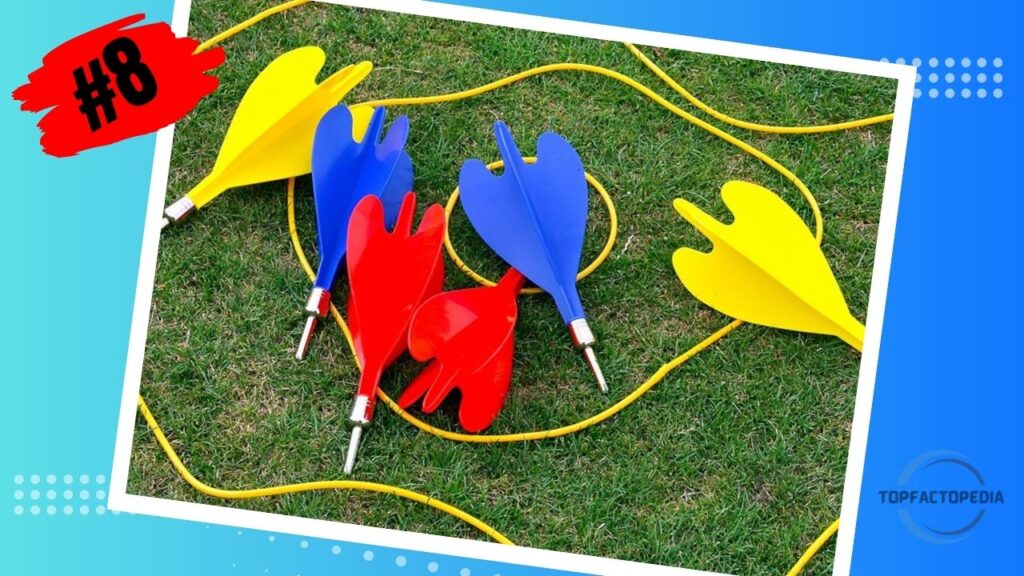
Lawn darts, also referred to as Jarts, are a type of dart game that rose to prominence as a popular outdoor activity in the 1970s. The set consisted of large darts that had pointed metal tips and were designed to be thrown into a target area. The darts, which unfortunately turned out to be dangerous projectiles, were responsible for a number of injuries, including impalement and damage to the eyes. As a direct consequence of this, the use of lawn darts has been made illegal in a number of countries, including the United States.
Clackers
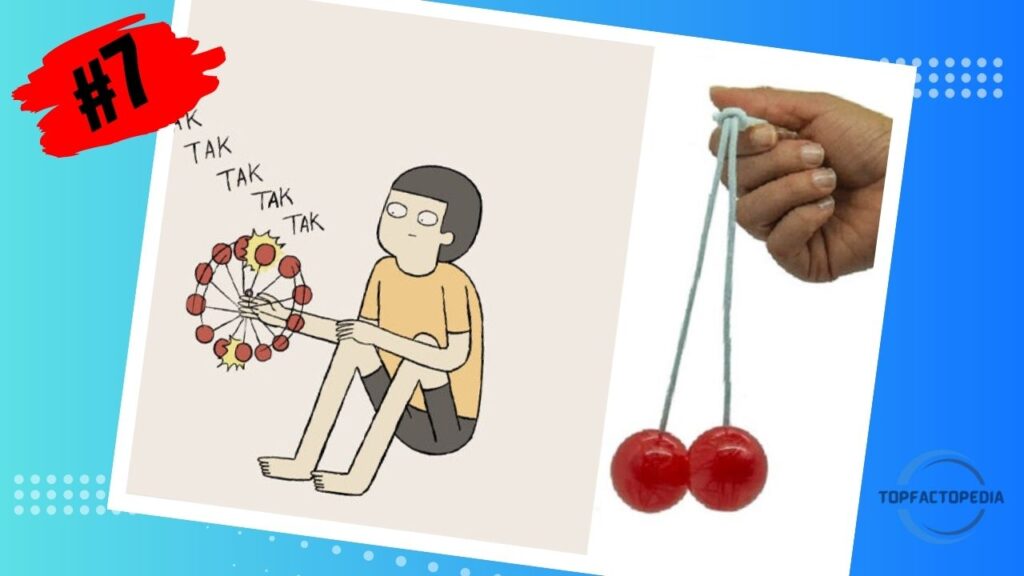
In the 1970s, clackers, which consisted of two tough plastic balls strung together by a string, became a popular toy for children to play with in playgrounds. The objective was to make a clacking sound by moving the balls up and down in a pendulum motion. On the other hand, because clackers are made of a hard material and there is the possibility of high-speed collisions, they frequently shattered upon impact, which resulted in injuries. As a direct result of this, they were prohibited because of safety concerns.
Sky Dancers

These flying dolls were called Sky Dancers, and they were launched from a plastic platform. Even though they gave off a childlike and entrancing vibe, the fact that they spun created a potentially dangerous situation. The dolls frequently deviated from their intended flight path, which led to collisions with unprotected individuals, walls, and furniture. Sky Dancers were discontinued as a result of numerous reports of injuries, which highlights how important it is to evaluate the potential risks that are associated with flying toys before purchasing them.
These instances serve as important reminders of the significance of stringently regulating playthings’ safety and conducting ongoing checks on them. However, risky playthings have not been phased out completely. Let’s take a look at some toys that are currently off limits because of the dangers they could pose to children.
You May Also Like: 10 Most Mysterious Sea Creatures Found in Deep Oceans
Current Banned Toys
Even though safety regulations and standards have become more stringent over the years, there are still cases in which toys do not fulfil these prerequisites, which results in their prohibition. The following items are currently prohibited from being sold as toys because they have been deemed to be unsafe:
Aqua Dots
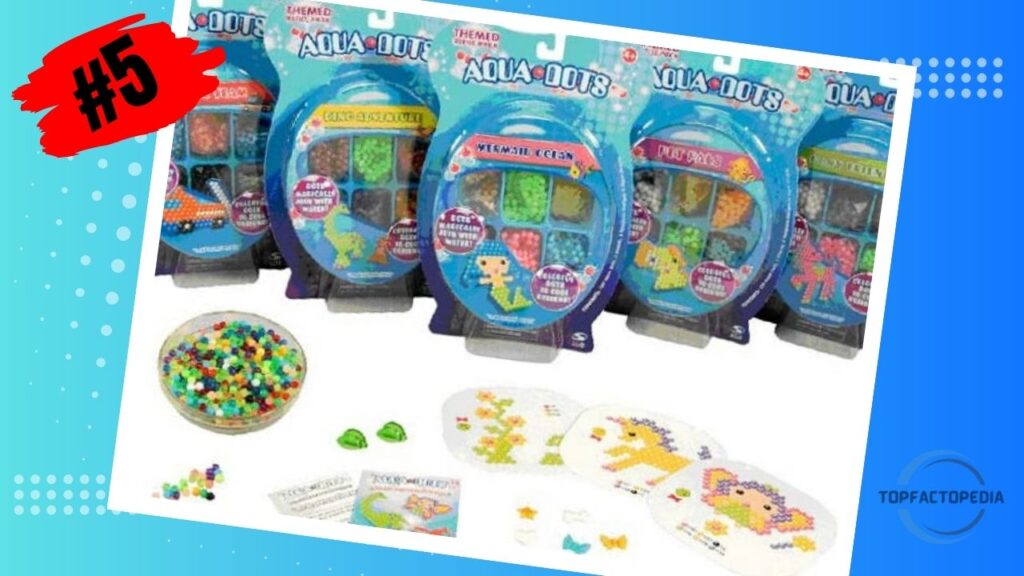
The popular craft toy known as Aqua Dots consisted of small beads that, when combined with water, could be arranged in a variety of patterns and then fused together. However, it was found that the beads contained a chemical that, when consumed, transformed into a potent sedative through the process of metabolization. This resulted in a number of cases of children falling into comas after swallowing the beads, which led to the product being banned as a result of these incidents.
CSI Fingerprint Examination Kit
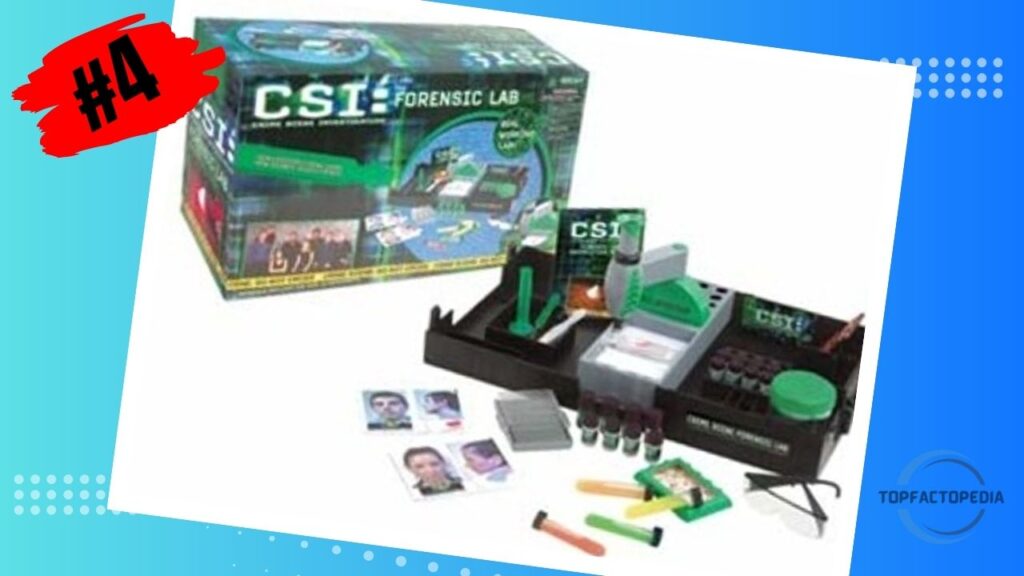
Children were given the opportunity to acquire knowledge regarding forensic science and fingerprint analysis through the use of an educational toy called the CSI Fingerprint Examination Kit. On the other hand, it was discovered that the fingerprint powder that was included in the kit contained asbestos, which is a substance that can cause cancer. Because asbestos exposure can pose serious health risks, the toy was eventually made illegal to protect children from any potential harm it could cause them.
Magnetix
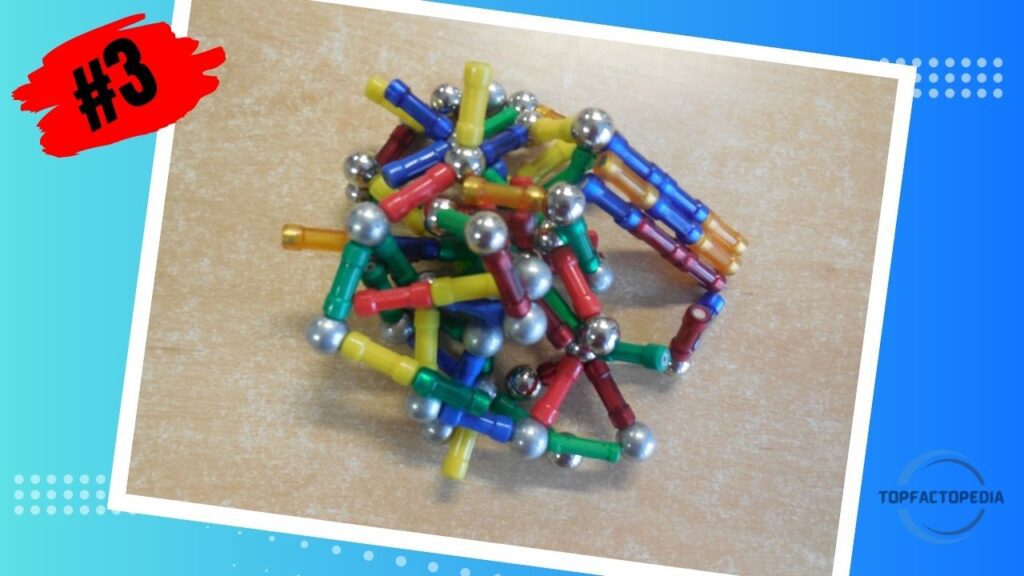
Magnetix was a magnetic construction toy that enabled children to build structures by making use of a variety of different sized and powered miniature magnets. On the other hand, there have been occurrences in which the magnets have separated from the plastic pieces, creating a significant danger of ingesting them.
In the event that multiple magnets were ingested, they would attract one another through the walls of the intestines, which would result in blockages and other severe injuries. Because of this, Magnetix was taken off the market and declared illegal.
Buckyballs

Buckyballs were sets of small, powerful spherical magnets that could be shaped and moulded into a variety of different structures. These magnets were spherical in shape. In a manner analogous to that of Magnetix, the primary cause for concern was the possibility of ingestion. If the magnets were to be ingested, they could potentially attract one another inside the body, leading to a number of serious health issues. Warnings were issued, and efforts were made to educate customers, but the product was ultimately prohibited.
Easy-Bake Oven

Over the course of its history, the Easy-Bake Oven, a time-honored toy that helped children bake bite-sized snacks with the assistance of a light bulb, has been subjected to a number of significant redesigns. Incandescent light bulbs, which were used in earlier models, reached dangerously high temperatures and could cause burns or even start fires. Because of these safety concerns, stricter regulations had to be put into place, which ultimately led to the older models being made illegal.
These examples illustrate the persistent difficulties involved in ensuring that toys are safe. The dangers that come with playing with dangerous toys go beyond the scope of individual accidents; they have an effect on the health and safety of children, the confidence of their parents, and the overall protection of consumers. Let’s investigate the wider repercussions that dangerous toys have.
The Impact of Dangerous Toys
Injuries and Fatalities
Toys that are unsafe have caused a significant number of injuries, and in some tragic cases, even death. The dangers posed by these toys range from those of a minor nature, such as cuts and bruises, to those of a severe nature, such as choking, poisoning, and other potentially fatal injuries.
Children are especially susceptible to these risks as a result of their natural inquisitiveness, their underdeveloped awareness, and their still-evolving motor skills. It is essential, in order to protect the lives and well-being of children, to take action against the dangers that are posed by dangerous toys.
Consumer Protection and Regulations
Because of the availability of potentially hazardous toys, governments and other regulatory bodies have developed and begun to strictly enforce more stringent safety regulations. In the United States, organizations such as the Consumer Product Safety Commission (CPSC) play an important part in the process of monitoring the toy industry and removing potentially hazardous products from circulation.
On the other hand, it is essential to keep in mind that regulations by themselves are not enough to completely eradicate dangerous toys. Continuous surveillance and testing, as well as vigilant behaviour on the part of consumers, are required in order to effectively identify and address potential risks.
You May Also Like: 8 Most Scary And Deadliest Insects That Can Kill Humans
Toy Safety Tips for Parents and Guardians
It is essential for you as a parent or guardian to take the initiative to ensure that the toys you give your child are safe before giving them to them. The following are some useful hints:
Checking for Recalls and Warnings
Always keep a close eye out for any toy recalls or safety warnings that may have been issued by the relevant regulatory bodies or manufacturers. The majority of the time, this information is published on their websites or made public via official announcements. Keeping yourself informed about the various dangers that could arise enables you to make educated choices and steer clear of playthings that have been deemed dangerous.
Age-Appropriate Toys
Choose toys for your child that are appropriate for his or her age as well as the stage of development they are currently in. Take into account their physical capabilities, as well as their cognitive abilities and emotional maturity. The age recommendations provided by manufacturers can be helpful in directing your selections and minimizing the risks associated with toys that are too difficult or could cause choking if the child were to play with them.
Inspecting Toys for Hazards
Check the toy thoroughly for any potential dangers before handing it over to your kid. Check to see if there are any signs of damage, such as missing components, sharp edges, loose parts, or small detachable components. Check to see that the toy is not made from any substances that could be harmful to the child’s health and that it does not have any components that are too small and could cause suffocation.
To reduce potential dangers and maximize the health and happiness of children, it is essential to instill in them healthy play patterns and provide adult supervision whenever they interact with playthings.
Conclusion
Toys are intended to make children happy, to stimulate their creativity, and to make learning easier for them. However, it is essential to have an accurate understanding of the risks that may be posed by certain types of toys. In the course of human history, we have seen many instances of toys that posed significant risks, which ultimately led to injuries and bans on their use.
Regulatory bodies and other organisations’ efforts have resulted in improved toy safety standards, but there are still many obstacles to overcome. Parents and guardians must remain vigilant, checking for recalls, choosing age-appropriate toys, and inspecting them for potential hazards.
Making certain that children are kept safe should be a top priority for all parties involved, including consumers, manufacturers, and government regulators and officials. We can make the world a safer place for children to play and explore if we maintain our commitment to toy safety and work together to create a better world for them to live in.
Few More Queries
- Are all dangerous toys immediately banned?
Not all dangerous toys are immediately banned. Regulatory bodies evaluate the risks posed by toys and, if necessary, issue recalls or impose restrictions. The severity of the danger, the number of reported incidents, and the potential for harm are factors considered in determining whether a toy should be banned.
- Can banned toys still be found on the market?
While banned toys should ideally be removed from the market, there have been instances of banned toys still being available through unauthorized sellers or online platforms. It is crucial to stay informed, follow recalls, and purchase toys from trusted sources to ensure safety.
- How can I ensure the toys I buy are safe for my child?
To ensure toy safety, check for age recommendations, read product reviews, and inspect toys for potential hazards. Look for third-party certifications and follow the guidelines provided by regulatory bodies. Additionally, stay informed about recalls and warnings to make informed choices.
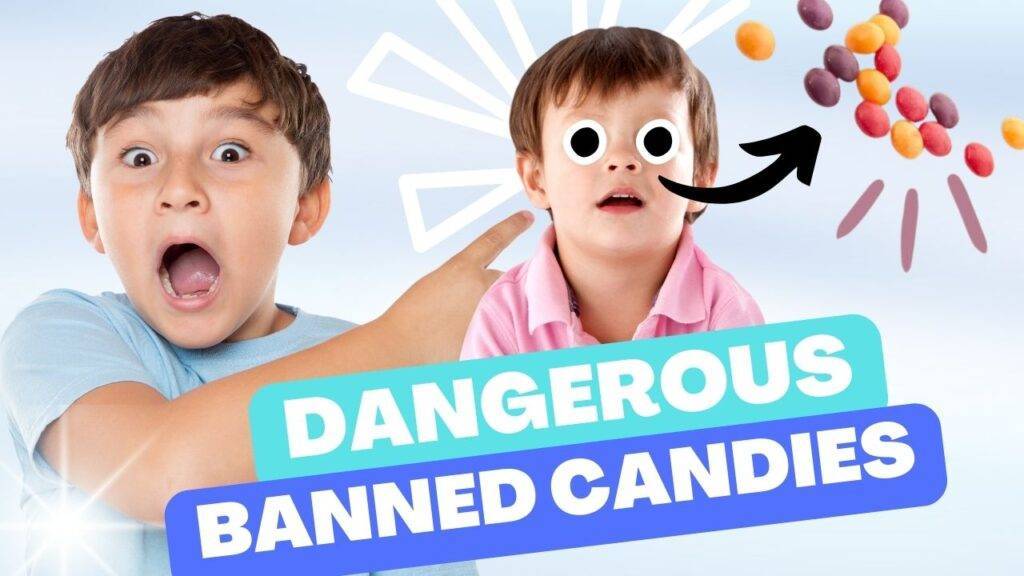



Your article helped me a lot, is there any more related content? Thanks!